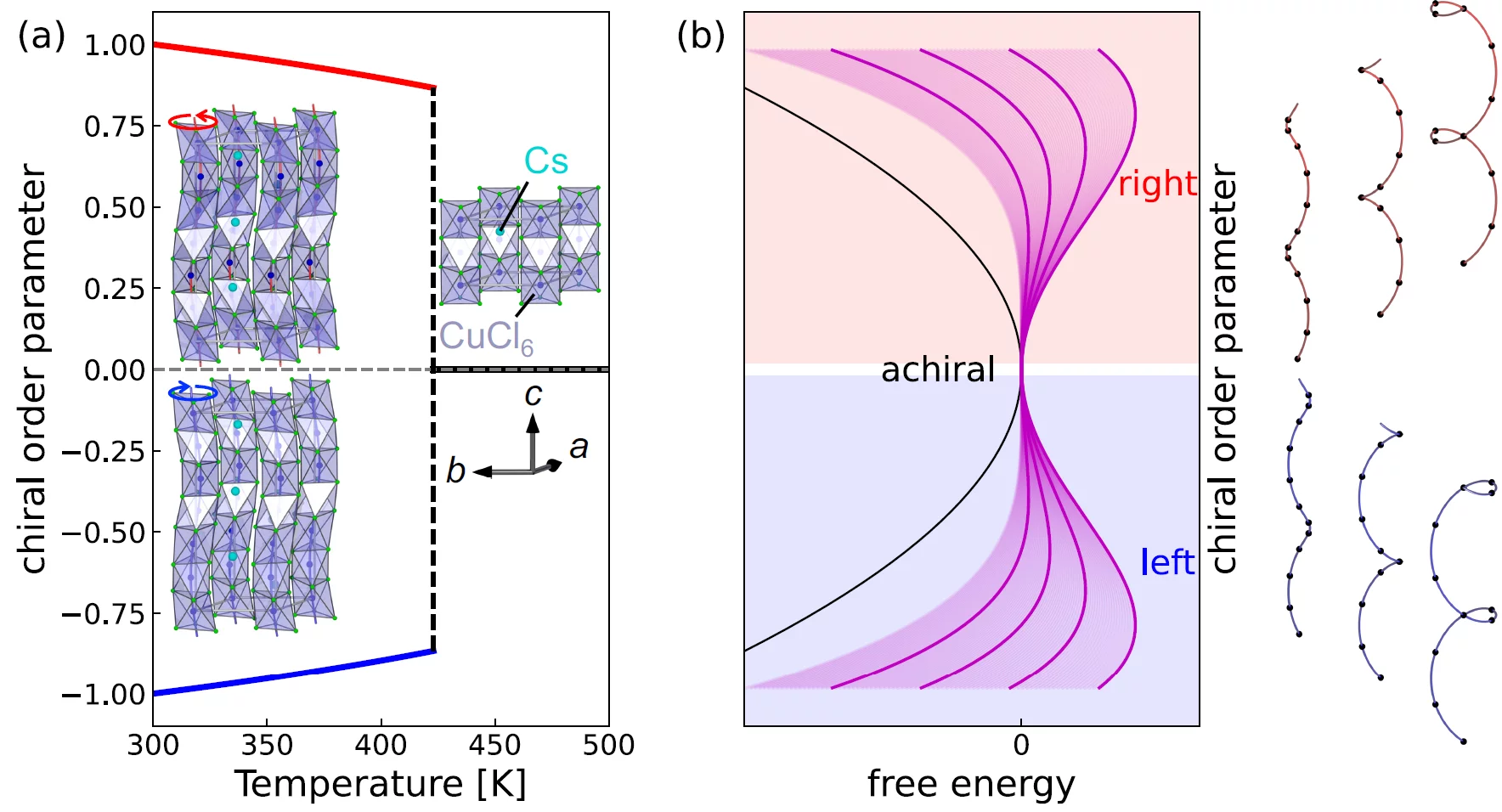Chirality is of strong relevance to central fields of many scientific communities. It describes the handedness of an object and, therefore, has only discrete states, i.e., left-handed, right-handed, or non-chiral.
We apply the concept of an amplitude in chiral crystal structures, which host a variety of intriguing emergent phenomena, e.g., non-reciprocal transport, multiferroicity, and chiral edge state with a topological band structure. We demonstrate that chirality amplitude is a controllable parameter even at ultrafast timescales by means of time-resolved resonant X-ray diffraction with circularly polarized X-rays. This technique directly accesses the chirality of a crystal structure in real time. As summarized in Neumann’s principle, the symmetry of a measurement cannot be lower than that of its point group, which makes symmetry a powerful tool for predicting physical response from materials, but these considerations remain qualitative. In contrast, the development of an order parameter quantitatively describes the physical response of materials, e.g., magnetization for the case of time-reversal symmetry breaking related phenomena, such as the anomalous Hall effect. Hence, the determination of the quantitative dynamics of the chirality amplitude is essential to understand and control symmetry-predicted chirality-related emergent phenomena, which is nowadays of large interest in related communities.
Contacts
Original Publication
Tuning chirality amplitude at ultrafast timescales in chiral CsCuCl3
Hiroki Ueda, Takahiro Sato, Quynh L. Nguyen, Elizabeth Skoropata, Ludmila Leroy, Tim Suter, Elsa Abreu, Matteo Savoin, Vincent Esposito, Matthias Hoffmann, Carl P. Romao, Julien Zaccaro, Diling Zhu, Steven Lee Johnson, and Urs Staub
Phys. Rev. Research 7, 043045, DOI: https://doi.org/10.1103/36tg-vr5k (link is external)

